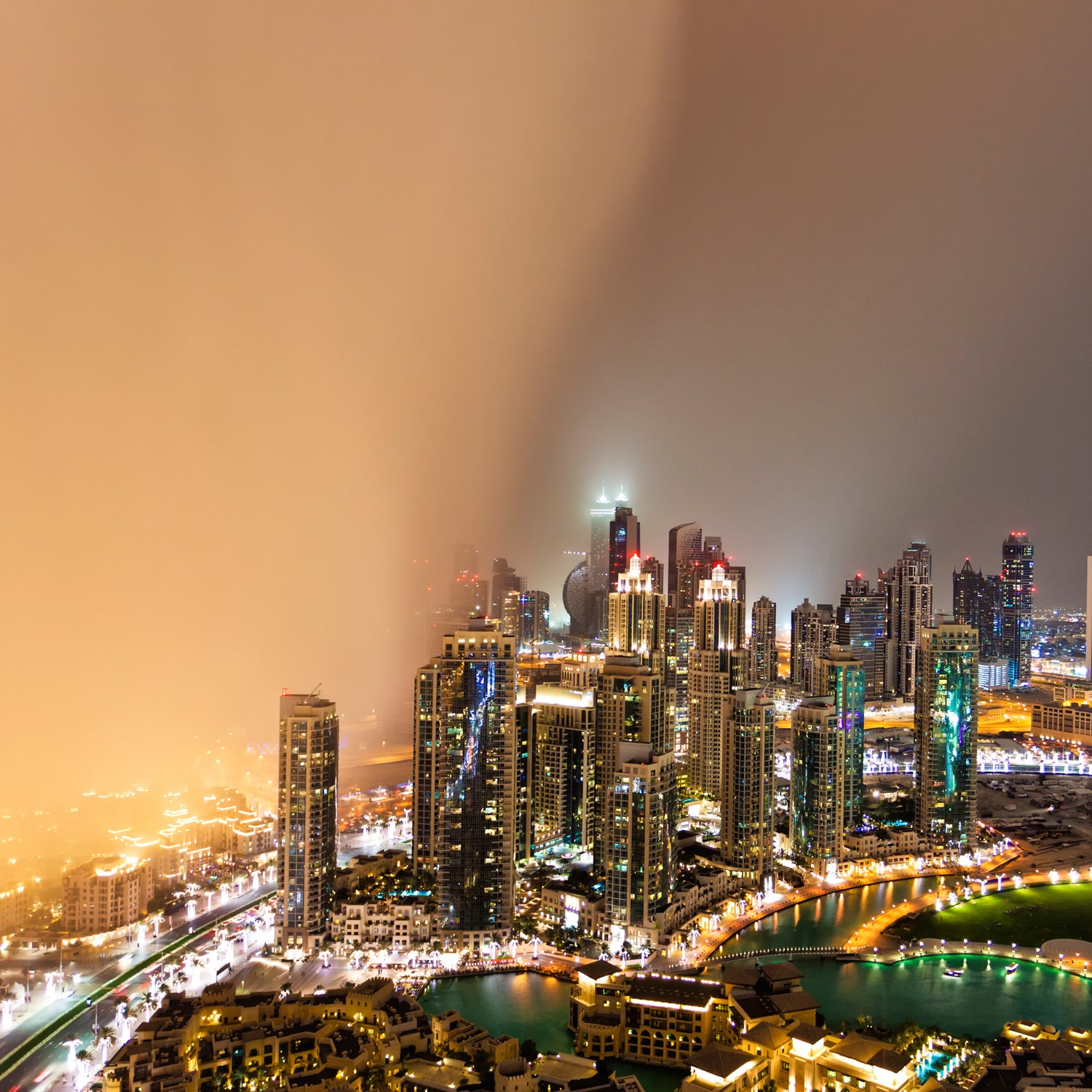The United Arab Emirates is one of the world’s biggest per-capita water consumers, guzzling almost 150 gallons per person per day. It’s also one of the driest countries: it hardly rains from March to December, and yearly rainfall averages around four inches. Natural mountains along the sparsely settled northwestern border attract some of that precipitation, but the big cities, including Abu Dhabi, Dubai, and Sharjah, are far away in the flat desert plains.
One possible solution to arid urban centers: bring the mountains to the cities. In cooperation with the UAE’s National Center of Meteorology and Seismology (NCMS), the U.S.-based National Center for Atmospheric Research (NCAR) is working on a plan to build an artificial mountain near the main urban areas. The idea is that the peak would trap moisture and cause rain to fall over the desert.
It’s true that mountains cause rain to fall. Air blown onto a mountain’s windward side must either rise over it or go around. Rising cools the air, which suddenly can’t hold as much moisture as it could when it was warm. If the forced ascent over the mountain is strong enough, the now-saturated air releases cloud droplets and potentially rain. Whether it rains at all and how much depends on several variables, including the amount of moisture in the cloud and the presence of pollutants. That’s the tricky formula NCAR and NCMS have to figure out. The organizations say it will take until at least the summer to determine the mountain’s size and location.
“The question of scale is crucial,” says Bob Henson, a meteorologist at . Before joining WU, he worked at NCAR for 25 years. “It’s hard to [discuss whether it’s feasible] without knowing the size of what they are considering. We don’t know how much rain they’re trying to produce, where they want the rain to fall, etc. [But] decades of research has shown that large cities can enhance rainfall in their vicinity and sometimes downwind. In the latter case, the air forced to flow around downtown skyscrapers converges downstream and enhances upward motion there.” The UAE wants to create the same effect, only by piling earth, not metal.
says it'll be a man-made mountain—singular—but Henson says they’d have better luck coaxing rain by building a few mountains together. “One important variable is whether the UAE and NCAR are envisioning a single peak or more of a ridge or row of mountains. All else being equal, the latter should be more effective at forcing rain, because it would be harder for the air to flow around a ridge versus a single peak,” he says.
“Weather modification is chock-full of concerns about liability,” Henson adds. “It can be extremely difficult to sort out what part of a given weather event was caused by each of the many factors involved. Also, real-life mountains tend to induce turbulence, so depending on the proposed height of the artificial mountain, you would want to consider possible effects on aviation.”
Of course, it’ll also be damn expensive, although the exact amount is still unknown. According to Arabian Business, the NCAR and NCMS will release their report this summer. If they get the green light, they’ll start planning the build.


